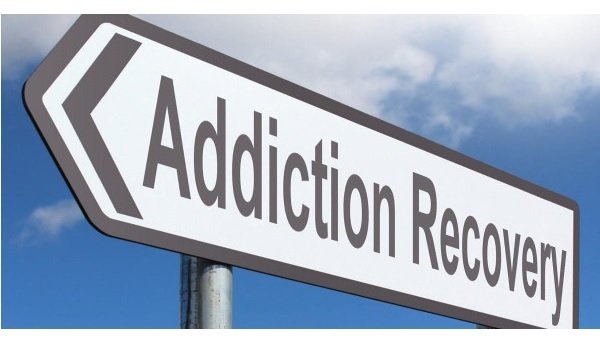
- What is the success rate of drug rehab in Australia?
- How does rehab work in Australia?
- How much does drug rehab cost in Australia?
- Does rehab cost money in Australia?
Drug addiction is a complex and challenging issue that affects individuals, families, and communities worldwide. In Australia, where substance abuse is a significant public health concern, drug rehabilitation programs play a crucial role in helping individuals recover from addiction and regain control over their lives.
However, measuring the success rate of drug rehab is a complex task, as it depends on various factors and can be influenced by multiple variables. In this article, we will explore the concept of success in drug rehabilitation and discuss the factors that can impact the success rate in Australia.
Defining Success in Drug Rehabilitation:
The success of drug rehabilitation is not easily quantifiable, as recovery is a deeply personal and individual journey. Success can be viewed differently by different stakeholders, including the individual seeking treatment, their family, healthcare professionals, and society at large. While abstinence from drugs is often considered a significant marker of success, it is essential to acknowledge that addiction recovery is a lifelong process, and relapse can be a part of that process for some individuals. Therefore, success in drug rehabilitation should be measured beyond mere abstinence and take into account various factors such as improved quality of life, better physical and mental health, rebuilt relationships, and sustained personal growth.
Factors Influencing Success Rate:
Individual Factors:
The success of drug rehabilitation is heavily influenced by individual factors, including the severity and duration of addiction, co-occurring mental health disorders, motivation for change, support system, and overall resilience. Individuals who are committed to their recovery journey, actively participate in treatment, and engage in aftercare support programs tend to have better outcomes. Additionally, addressing underlying mental health issues through integrated treatment approaches can significantly impact the success rate.
Treatment Program Factors:
The type and quality of the treatment program play a crucial role in determining the success rate. Evidence-based practices, such as cognitive-behavioral therapy, motivational interviewing, and medication-assisted treatment when appropriate, have been shown to be effective in helping individuals overcome addiction. Comprehensive and individualized treatment plans that address the unique needs of each person tend to yield better results. The availability of ongoing support services, including counseling, relapse prevention programs, and vocational training, also contribute to long-term success.
Duration and Continuity of Treatment:
The duration and continuity of treatment are important factors influencing success. Short-term interventions or brief detoxification programs may provide immediate relief but may not offer sustainable solutions. Research suggests that longer treatment durations are associated with improved outcomes, as they allow individuals to address the underlying causes of addiction, develop coping skills, and consolidate positive changes in their lives. Furthermore, the provision of continuing care and support after the initial treatment period significantly contributes to relapse prevention and long-term success.
Post-Rehabilitation Support:
The availability and utilization of post-rehabilitation support services greatly impact the success rate. Transitioning from a structured treatment environment to everyday life can be challenging, and ongoing support is crucial during this period.
Support groups, peer mentoring, outpatient counseling, and community-based recovery programs can provide a network of support, encouragement, and accountability, helping individuals maintain their recovery journey and reduce the risk of relapse.
Evaluating Success Rates in Australia:
Measuring the success rate of drug rehabilitation programs in Australia is a complex task due to several factors. Limited standardized data collection and reporting systems make it challenging to obtain accurate statistics on long-term outcomes.
Additionally, defining and measuring success uniformly across different treatment providers is difficult. However, some studies have provided insights into the success rates in Australia.
A 2014 report by the Australian Institute of Health and Welfare (AIHW) indicated that approximately 50% of individuals who completed a publicly funded treatment program reported not using drugs or alcohol at a six-month follow-up.
However, it’s important to note that this figure may not fully capture the complexities of success in drug rehabilitation. The success rate can vary depending on the specific substance being abused, the treatment approach utilized, and the individual’s commitment to recovery.
Moreover, success rates should not be viewed as a definitive measure of a program’s effectiveness. The journey of recovery is unique for each individual, and relapse can be a common occurrence.
Relapse does not imply failure; rather, it should be seen as an opportunity for further growth and adjustment in the treatment approach.
To improve the success rate of drug rehabilitation in Australia, there are several key areas that warrant attention:
- Increased Accessibility and Availability of Treatment: Efforts should be made to enhance the accessibility and availability of drug rehabilitation programs across the country. This includes reducing wait times for treatment entry and expanding the range of treatment options to cater to diverse needs.
- Integration of Mental Health Services: Recognizing the high prevalence of co-occurring mental health disorders among individuals with substance abuse issues, there should be greater integration of mental health services within drug rehabilitation programs. Comprehensive treatment plans that address both addiction and mental health can significantly improve outcomes.
- Tailored Treatment Approaches: Recognizing the unique needs of each individual, treatment programs should be tailored to address their specific circumstances. This may involve incorporating evidence-based practices, such as motivational interviewing, cognitive-behavioral therapy, and trauma-informed care, into the treatment process.
- Long-Term Support and Aftercare: Providing ongoing support and aftercare services is crucial for maintaining recovery beyond the initial treatment period. Continued counseling, support groups, vocational training, and assistance with reintegration into society can significantly contribute to sustained success.
- Enhanced Data Collection and Evaluation: Improving the quality and consistency of data collection and evaluation processes is vital to obtaining accurate and meaningful statistics on success rates. This would facilitate the identification of effective treatment approaches and enable the sharing of best practices among service providers.
How much does drug rehab cost in Australia?
The cost of drug rehabilitation in Australia can vary widely depending on several factors, including the type of treatment program, duration of stay, location, amenities provided, and level of personalized care. It is important to note that there are various options available, ranging from publicly funded programs to private luxury facilities.
Publicly Funded Programs: In Australia, there are publicly funded drug rehabilitation programs that aim to provide affordable or free treatment options. These programs are typically operated by government agencies, non-profit organizations, or community health centers.
The cost of treatment in these programs is often subsidized by the government, and fees, if applicable, are based on a sliding scale according to an individual’s income and ability to pay. This makes it more accessible for individuals with limited financial resources.
Private Rehabilitation Centers: Private rehabilitation centers offer a range of treatment options and amenities, and they generally come with a higher price tag. The cost of private drug rehab can vary significantly depending on factors such as the location (urban centers tend to be more expensive), duration of treatment, types of therapy offered, accommodation quality, and additional services provided (such as medical detoxification, individual therapy sessions, holistic therapies, and recreational activities).
On average, the cost for a 28-day program in a private facility can range from AUD 10,000 to AUD 30,000 or more. It’s important to note that some private health insurance policies may cover a portion of the costs, depending on the policy terms and coverage.
Luxury and Executive Rehabilitation Centers: Luxury and executive rehabilitation centers offer high-end facilities, personalized care, and an array of additional services tailored to the individual’s preferences and needs. These facilities provide a comfortable and private environment, gourmet meals, luxury accommodations, and various amenities such as spa treatments, fitness centers, and recreational activities. The cost of these programs can be significantly higher and can range from AUD 30,000 to AUD 80,000 or more for a 28-day program.
It’s crucial to consider that the cost of drug rehabilitation is an investment in one’s health and future well-being. When evaluating the cost, it’s essential to factor in the quality of care, individualized treatment approaches, qualified staff, aftercare support, and the program’s success rates.
Many facilities also offer financial assistance options or payment plans to make treatment more affordable.
Additionally, it is recommended to consult with the treatment center directly to get accurate and up-to-date information on the cost of their programs, including any potential additional expenses that may be involved, such as medical assessments, medications, or specialized therapies.
Each facility will have its own pricing structure and may offer various treatment options tailored to different budgets and needs.
Conclusion:
The success rate of drug rehabilitation in Australia is influenced by a range of individual, treatment program, and support system factors. While quantifying success can be challenging due to the complexity of addiction and recovery, it is important to shift the focus from a narrow definition based solely on abstinence to a more comprehensive perspective that encompasses improved quality of life, enhanced well-being, and sustained personal growth.
To improve the success rate, it is crucial to enhance the accessibility and availability of treatment, integrate mental health services, tailor treatment approaches, provide long-term support and aftercare, and improve data collection and evaluation processes.
By addressing these areas, Australia can continue to make strides in supporting individuals on their recovery journey and reducing the impact of drug addiction on individuals, families, and communities.



